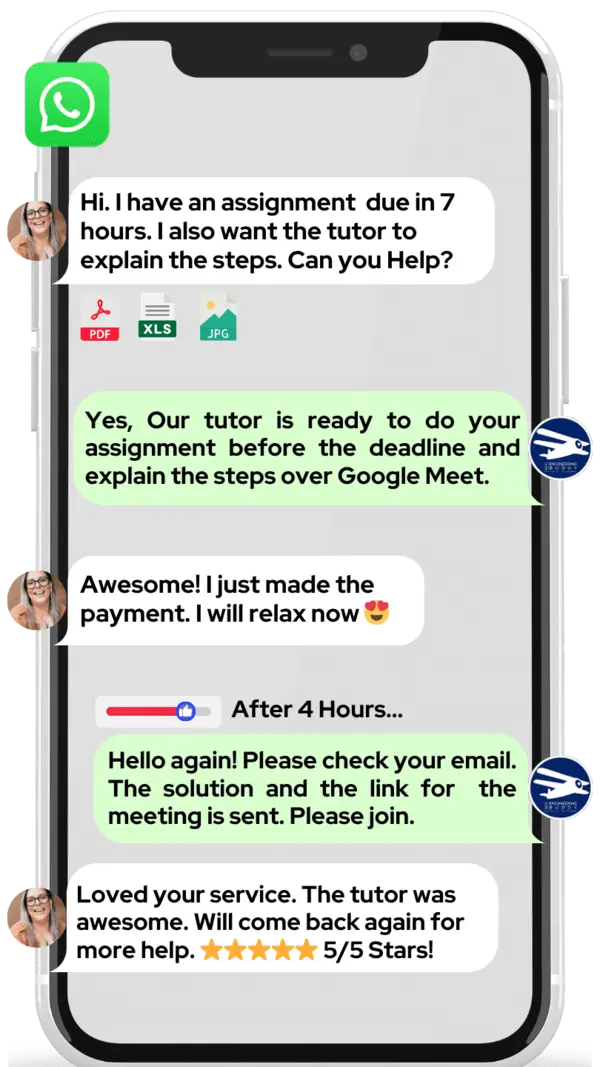

Hire The Best Acceptance Testing Tutor
Top Tutors, Top Grades. Without The Stress!
10,000+ Happy Students From Various Universities
Choose MEB. Choose Peace Of Mind!
How Much For Private 1:1 Tutoring & Hw Help?
Private 1:1 Tutors Cost $20 – 35 per hour* on average. HW Help cost depends mostly on the effort**.
Acceptance Testing Online Tutoring & Homework Help
What is Acceptance Testing?
Acceptance Testing, also known as UAT (User Acceptance Testing), is the final verification phase where end users or client assess a system or product against predefined business requirements. By simulating real-world scenarios – for instance placing an order on an e‑commerce site or processing bank transactions – testers ensure readiness for production.
- User Acceptance Testing (UAT) - Beta Testing - End-user Testing - Customer Acceptance Testing - Field Testing - Operational Acceptance Testing (OAT) - Factory Acceptance Testing (FAT)
Major topics include - Requirements analysis: deriving acceptance criteria from user stories or specs. Example: in a mobile banking app, verifying fund transfers. - Test planning: defining scope, resources and schedules. - Test case design: outlining scenarios like shopping cart checkout. - Environment setup: preparing staging servers and realistic data. - Execution & defect reporting: running cases and logging issues. - Stakeholder review & sign‑off: formal customer approval before go-live.
Acceptance Testing emerged in the 1970s as part of formal software life cycles. At that time, rigid Waterfall models drove a single, high‑stakes user sign‑off step. In the 1980s the term UAT (User Acceptance Testing) gained traction when enterprise vendors began involving clients in validation. The 1990s saw Beta Testing popularized by consumer software, letting users trial releases and report issues. Agile methods in the 2000s integrated continuous acceptance checks within sprints. Behavior Driven Development (BDD) introduced executable acceptance criteria. Today continuous delivery pipelines automate acceptance gates, feedback tools keep customers in the loop, reliable releases.
How can MEB help you with Acceptance Testing?
If you want to learn Acceptance Testing, MEB offers one‑on‑one online Acceptance Testing tutoring. If you are a school, college or university student and want top grades on assignments, lab reports, live assessments, projects, essays or dissertations, try our 24/7 instant online Acceptance Testing homework help. We prefer using WhatsApp chat, but if you don’t use it, please email us at meb@myengineeringbuddy.com
Although our services are open to everyone, most of our students come from the USA, Canada, UK, Gulf countries, Europe and Australia.
Students reach out to us because they face tough courses, too many assignments, tricky questions and concepts, health or personal issues, or learning difficulties. Some juggle part‑time work, miss classes or can’t keep up with their professor’s pace.
If you are a parent and your student is struggling with this subject, contact us today to help your ward ace exams and homework. They will thank you!
MEB also supports over 1,000 other subjects with some of the best tutors and subject experts. It’s important to know your limits and ask a tutor for help when you need it, so you can enjoy a stress‑free academic life.
DISCLAIMER: OUR SERVICES AIM TO PROVIDE PERSONALIZED ACADEMIC GUIDANCE, HELPING STUDENTS UNDERSTAND CONCEPTS AND IMPROVE SKILLS. MATERIALS PROVIDED ARE FOR REFERENCE AND LEARNING PURPOSES ONLY. MISUSING THEM FOR ACADEMIC DISHONESTY OR VIOLATIONS OF INTEGRITY POLICIES IS STRONGLY DISCOURAGED. READ OUR HONOR CODE AND ACADEMIC INTEGRITY POLICY TO CURB DISHONEST BEHAVIOUR.
What is so special about Acceptance Testing?
Acceptance testing stands out as the final check that ensures software meets real user needs. Instead of focusing on technical details, it explores whether the program works in everyday scenarios. This makes it unique: it involves actual stakeholders, uses clear criteria drawn from requirements, and bridges the gap between developers and end users before a release.
Compared to other Agile tests, acceptance testing offers clear advantages: it reduces post-release bugs, boosts user confidence, and aligns the team around real goals. On the downside, it can be time-consuming, needs detailed planning, and late fixes are expensive. It can also feel subjective when criteria are vague. Balancing thorough checks with speed is key.
What are the career opportunities in Acceptance Testing?
After finishing a basic course in Acceptance Testing, you can move on to advanced studies in software quality and Agile methods. Many universities and online platforms now offer micro‑credentials in test automation, DevOps, and AI‑driven testing. You could also pursue professional certificates such as the ISTQB Advanced Level or a Master’s in Software Engineering focused on quality assurance.
Popular job roles include Acceptance Test Engineer, QA Analyst, Test Automation Engineer, and DevOps Engineer. In these jobs you work closely with product owners and developers, write acceptance criteria, run user acceptance tests, and automate end‑to‑end test scenarios using tools like Cucumber, Selenium, or Playwright. You also analyze feedback from real users to make sure the software matches business needs.
We learn Acceptance Testing to make sure the software we build actually works the way customers expect. Preparing test cases teaches us to spot gaps between requirements and code, catch defects early, and keep projects on track. It also helps teams communicate clearly about what “done” really means.
Acceptance Testing is key in Agile and DevOps. It speeds up releases, cuts down on costly bug fixes, and boosts user confidence. By fitting tests into continuous delivery pipelines, teams can deliver updates more often, maintain high quality, and adapt quickly to market changes.
How to learn Acceptance Testing?
First, start by learning what acceptance tests are: read the user stories and acceptance criteria, then write clear test cases using the Given‑When‑Then (Gherkin) style. Pick a simple tool like Cucumber, TestRail or Behave to manage your cases. Plan which tests to run, execute them on the application, log your results and defects in a shared report, and review outcomes with developers or customers. Update tests as requirements change and keep refining your approach.
Acceptance Testing isn’t usually very hard once you break it into steps. You need a good eye for detail, clear communication, and basic tool know‑how. If you follow a methodical process—writing clear criteria, automating where possible, and reviewing results with stakeholders—it becomes routine rather than intimidating.
You can learn Acceptance Testing on your own by using free online guides, videos and practice projects. However, a tutor can speed up your progress by answering questions in real time, giving feedback on your test cases, and helping you avoid common pitfalls. If you feel stuck or want structured guidance, getting a tutor can save time and stress.
Our MEB tutors are experienced in Agile and Acceptance Testing. We offer 1:1 online sessions 24/7 to walk you through real examples, review your work, and help with any assignments. Our coaches tailor lessons to your pace and needs, making sure you understand each concept before moving on.
Most beginners can grasp basic Acceptance Testing in about 2–4 weeks by studying for 1–2 hours a day. To gain deeper skills—like automating tests or handling complex workflows—you may need 1–2 months of regular practice. Consistency and hands‑on work are key to getting a solid handle on acceptance testing.
Youtube Channels: ISTQB Training by Software Testing Help, Ministry of Testing channel, Automation Step by Step. Websites: AgileAlliance.org, SoftwareTestingHelp.com, BBC Agile desk. Articles: “Acceptance Criteria Best Practices” on Guru99. Books: “Specification by Example” by Gojko Adzic, “Agile Testing” by Lisa Crispin and Janet Gregory, “BDD in Action” by John Smart. Tutorials: free courses on Coursera or Udemy’s “Acceptance Testing with Cucumber” classes give step‑by‑step labs. Use these to reinforce your learning. Also, check TestRail basics videos and free Gherkin syntax guides online.
College students, parents and tutors from the USA, Canada, UK, the Gulf and beyond—if you need a helping hand with online 1:1 24/7 tutoring or assignment support in Agile or any other subject, our tutors at MEB can help at an affordable fee.








